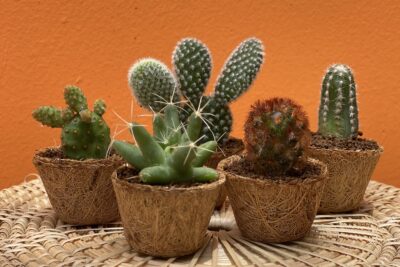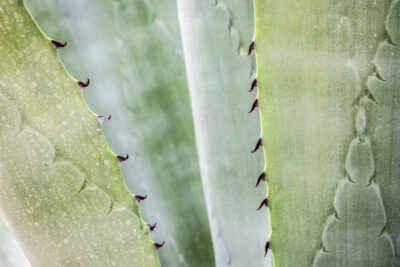
Protecting Succulents: Tips for Cold Weather Survival

Succulents are a popular and diverse group of plants known for their ability to store water in their leaves, stems, and roots. They have gained immense popularity in recent years due to their unique shapes, colors, and low maintenance requirements. While succulents are typically associated with warm and arid climates, many species can also thrive in colder regions. However, cold weather can pose a significant threat to these plants, as they are not well adapted to freezing temperatures. Therefore, it is important for succulent enthusiasts to take appropriate measures to protect their plants during the winter months.
We will explore various tips and strategies for protecting succulents during cold weather. We will discuss the importance of understanding your specific succulent species and its cold tolerance, as well as the role of proper watering and location selection. Additionally, we will provide practical advice on how to prepare your succulents for winter, including tips on how to insulate and cover them, as well as how to deal with frost damage. By following these guidelines, you can ensure the survival and health of your succulents throughout the colder months, allowing you to continue enjoying these fascinating and beautiful plants year-round.
- Use frost cloth or blankets to cover succulents during cold nights
- Provide extra insulation with layers of mulch
- Move potted succulents indoors during freezing temperatures
- Monitor and adjust watering routine
- Provide extra insulation by placing mulch around the base of the succulents
- Avoid overwatering during winter months to prevent root rot
- Place succulents in areas with maximum sunlight exposure during the day
- Avoid placing succulents near drafts or cold air vents
- Use a well-draining soil mix to prevent waterlogged roots
- Monitor the temperature and adjust protection methods accordingly
- Consider using a greenhouse or cold frame to provide a controlled environment for succulents
- Prune any dead or damaged parts of the succulents to promote healthy growth
- Frequently Asked Questions
Use frost cloth or blankets to cover succulents during cold nights
If you want to protect your succulents from the freezing temperatures during cold nights, using frost cloth or blankets is a great solution. These protective coverings act as insulation, keeping the cold air away from your delicate plants.
When using frost cloth or blankets, make sure to drape them over your succulents, completely covering them. Secure the coverings in place using stakes or rocks to prevent them from blowing away with strong winds. It's essential to cover your plants before the sun sets to trap the heat generated during the day.
Remember: Do not use plastic as a covering material, as it can cause condensation and trap moisture, leading to rotting of the succulents.
Provide extra insulation with layers of mulch
In addition to using frost cloth or blankets, you can provide your succulents with extra insulation by applying a layer of mulch around their base. Mulch acts as a natural insulator, keeping the soil and plant roots warm.
 Using Regular Miracle Gro Fertilizer: Is it Suitable for Succulents?
Using Regular Miracle Gro Fertilizer: Is it Suitable for Succulents?Choose a well-draining mulch such as wood chips, straw, or pine needles. Spread a layer of mulch around the succulents, making sure to leave a small gap around the stem to prevent moisture buildup. The mulch will help regulate the soil temperature and protect the roots from extreme cold.
Move potted succulents indoors during freezing temperatures
If you have potted succulents, it's best to move them indoors during freezing temperatures. Succulents in containers are more susceptible to cold damage compared to those planted in the ground.
Find a well-lit area in your home near a window where your succulents can receive sufficient light. Make sure to avoid placing them near drafts or heating vents, as sudden temperature fluctuations can be harmful to the plants.
Additionally, be mindful of overwatering your indoor succulents during winter. Succulents have reduced water needs during the dormant season, so allow the soil to dry out between waterings.
Monitor and adjust watering routine
During cold weather, succulents enter a dormant phase where their growth slows down. It's crucial to adjust your watering routine accordingly to prevent overwatering, which can lead to root rot.
Check the moisture level of the soil before watering. Stick your finger about an inch into the soil; if it feels dry, it's time to water. However, if the soil is still moist, wait a few more days before watering again.
Remember that succulents are adapted to survive in arid conditions, so they can tolerate dry soil better than overly wet soil.
 Succulent Care on Wood: A Guide to Proper Maintenance
Succulent Care on Wood: A Guide to Proper Maintenance- Water sparingly during winter
- Avoid watering when the temperature is near freezing
- Water early in the day to allow excess moisture to evaporate
By adjusting your watering routine to match the needs of your succulents during cold weather, you can help them thrive and survive the winter months.
When the temperature drops below freezing, it's important to take extra precautions to protect your beloved succulents. One of the easiest and most effective ways to safeguard them is by moving potted succulents indoors.
Succulents are known for their ability to thrive in warm and arid climates. They are not well-equipped to withstand freezing temperatures, as their thick, fleshy leaves are prone to damage from frost. By bringing them indoors, you can provide a controlled environment that will help them survive the cold winter months.
Here are a few key steps to follow when moving your potted succulents indoors:
- Choose a suitable indoor location: Find a spot in your home that receives ample sunlight, such as a south-facing window. Succulents require at least six hours of sunlight each day to stay healthy and vibrant.
- Check for pests: Before bringing your succulents indoors, inspect them for any signs of pests, such as mealybugs or spider mites. These unwanted visitors can quickly spread and cause damage to your other indoor plants, so it's crucial to address any infestations before introducing the plants to your home.
- Gradually acclimate to indoor conditions: Succulents are resilient plants, but sudden changes in temperature and humidity can shock them. To prevent stress and potential damage, gradually acclimate your potted succulents to the indoor conditions by placing them in a shaded area indoors for a few days before moving them to their designated spot.
- Provide proper drainage: Succulents are susceptible to root rot if they sit in waterlogged soil for extended periods. Ensure that your indoor pots have drainage holes to allow excess water to escape. You can also use a well-draining soil mix specifically formulated for succulents to promote healthy root growth.
- Monitor indoor conditions: Keep a close eye on the temperature and humidity levels in the area where your succulents are kept. Aim for a temperature range of 60-75°F (15-24°C) and maintain a relative humidity of around 40-60%. Avoid placing your succulents near drafty windows or heat sources, as extreme temperature fluctuations can harm them.
By following these tips and moving your potted succulents indoors during freezing temperatures, you can ensure their survival and enjoy their beauty all year round. Remember, taking proactive measures to protect your succulents during cold weather is essential for their overall health and longevity.
Provide extra insulation by placing mulch around the base of the succulents
Succulents are known for their ability to withstand harsh conditions, but even they need a little help when it comes to cold weather. One effective way to protect your succulents from freezing temperatures is by providing extra insulation in the form of mulch.
 Reviving an Overwatered Succulent: Tips to Save Your Plant
Reviving an Overwatered Succulent: Tips to Save Your PlantMulch acts as a barrier, trapping heat and preventing the soil from freezing. This is especially important for the roots of succulents, as they are more susceptible to cold damage. By adding a layer of mulch around the base of your succulents, you can create a cozy environment that will help them survive the winter.
- Choose the right type of mulch: Opt for organic mulch such as straw, wood chips, or compost. These materials provide better insulation and allow for better air circulation compared to synthetic options.
- Apply the mulch correctly: Spread a layer of mulch around the base of each succulent, making sure to cover the entire root zone. Aim for a thickness of 2-3 inches, but be careful not to bury the plant's stem or leaves.
- Monitor moisture levels: While mulch helps retain moisture, it's important to strike the right balance. Avoid overwatering, as excessive moisture combined with cold temperatures can lead to root rot. Check the soil regularly and adjust your watering schedule accordingly.
Remember to remove the mulch once the cold weather subsides and temperatures rise. Leaving the mulch in place for too long can create a damp environment that promotes fungal growth and pest infestations. As spring approaches, gradually remove the mulch layer to allow the succulents to acclimate to the changing conditions.
By providing this additional layer of insulation, you can give your succulents a better chance of surviving the winter and thriving once warmer weather returns.
Avoid overwatering during winter months to prevent root rot
Succulents are known for their ability to store water in their leaves and stems, making them well-suited for arid climates. However, during the winter months, it's important to adjust your watering routine to ensure the survival of your succulents.
One of the most common mistakes made by succulent enthusiasts is overwatering during the colder months. While succulents still need some water to survive, they enter a period of dormancy during winter, and their water requirements decrease significantly.
Overwatering during this time can lead to root rot, a condition where the roots become saturated and begin to decay. This can be fatal for your succulents, as it inhibits their ability to absorb nutrients and water from the soil.
 Succulent Care: Pruning Damaged Leaves
Succulent Care: Pruning Damaged LeavesTo prevent root rot, it's crucial to adjust your watering schedule. Instead of watering on a regular basis, only water your succulents when the top inch of the soil feels dry. This will help prevent excess moisture from accumulating around the roots.
Another tip to remember is to always use well-draining soil for your succulents. This allows excess water to flow out of the pot, preventing it from sitting in the soil and causing root rot.
Key points to remember:
- Reduce watering during winter months
- Water only when the top inch of soil is dry
- Use well-draining soil to prevent root rot
By following these simple tips, you can protect your succulents from the dangers of overwatering during cold weather. Remember, less is more when it comes to watering your succulents in winter!
Place succulents in areas with maximum sunlight exposure during the day
Succulents thrive in bright, sunny locations. During cold weather, it is essential to place them in areas that receive maximum sunlight exposure during the day. This will help the succulents soak up as much warmth and light as possible, aiding their survival in colder temperatures.
Avoid placing succulents near drafts or cold air vents
One of the most important tips for protecting succulents during cold weather is to avoid placing them near drafts or cold air vents. Succulents are adapted to thrive in warm and dry environments, so exposing them to cold drafts or direct blasts of cold air can be detrimental to their health.
 The Ultimate Guide to Succulent Care: Everything You Need to Know
The Ultimate Guide to Succulent Care: Everything You Need to KnowDrafts and cold air can cause succulents to become stressed and can lead to damage such as leaf discoloration or even death. Therefore, it is crucial to keep your succulents in a location where they are shielded from any direct contact with cold air.
If you have succulents indoors, make sure to place them away from windows or doors that are frequently opened during cold weather. Additionally, avoid placing them near air vents or heating sources that can produce drafts.
By protecting your succulents from drafts and cold air vents, you are providing them with a stable and suitable environment to thrive in, even during the colder months.
Use a well-draining soil mix to prevent waterlogged roots
One of the most important factors in protecting succulents during cold weather is ensuring proper drainage. Succulents are native to arid regions and are adapted to survive in dry conditions. When exposed to excessive moisture, their roots can become waterlogged, leading to root rot and ultimately the death of the plant.
To prevent waterlogged roots, it is crucial to use a well-draining soil mix for your succulents. This type of soil allows excess water to drain away quickly, ensuring that the roots do not sit in damp conditions for extended periods. A typical succulent soil mix consists of a combination of potting soil, perlite, and coarse sand. The potting soil provides the necessary nutrients, while perlite and sand help improve drainage.
When repotting or planting succulents, make sure to choose a pot or container with drainage holes at the bottom. These holes allow excess water to escape, further preventing waterlogging. Additionally, avoid using saucers or trays underneath the pots to catch excess water, as this can lead to water accumulation.
 Preventing Succulent Stem Growth: Tips for Compact, Healthy Plants
Preventing Succulent Stem Growth: Tips for Compact, Healthy PlantsQuick Tip: If you have existing succulents in pots without drainage holes, consider transferring them to pots with proper drainage or drilling holes in the bottom of the current pots to improve drainage.
Monitor the temperature and adjust protection methods accordingly
When it comes to protecting your succulents during cold weather, monitoring the temperature is crucial. Different succulent species have different temperature tolerances, so it's important to know the specific needs of your plants.
Investing in a reliable thermometer can help you keep track of the temperature fluctuations in your garden or indoor space. This will allow you to take necessary precautions in a timely manner.
Based on the temperature readings, you can adjust the protection methods accordingly. Here are some tips to consider:
- Bring them indoors: If the temperature drops below the recommended threshold for your succulents, it's best to bring them indoors. Find a bright location near a window where they can receive adequate sunlight.
- Provide insulation: If moving your succulents indoors is not an option, consider providing insulation to protect them from the cold. Covering them with frost cloths or blankets can help retain heat and prevent frost damage.
- Use heat sources: In extreme cold conditions, you can provide additional heat sources to keep your succulents warm. Electric heaters, heat lamps, or even heat-emitting mats specifically designed for plants can provide the necessary warmth.
- Water sparingly: During cold weather, succulents enter a dormant phase and require less water. Overwatering during this time can lead to root rot. Adjust your watering schedule accordingly and allow the soil to dry out between waterings.
- Group plants together: Another effective method is to group your succulents together. This creates a microclimate where the plants can provide each other with some degree of protection against the cold.
Remember, the key is to closely monitor the temperature and be proactive in implementing suitable protection methods. By following these tips, you can ensure that your succulents survive the cold weather and thrive for years to come.
Consider using a greenhouse or cold frame to provide a controlled environment for succulents
When it comes to protecting your precious succulents from cold weather, one effective solution is to consider using a greenhouse or a cold frame. These structures provide a controlled environment that can shield your succulents from harsh temperatures and frost.
 Revive Your Dying Succulent with These Essential Tips
Revive Your Dying Succulent with These Essential TipsA greenhouse is an enclosed structure made of glass or transparent plastic, allowing sunlight to enter while trapping heat inside. This creates a warm and protected space for your succulents, mimicking their natural habitat and ensuring their survival during the colder months.
If you don't have the space or resources for a full-sized greenhouse, a cold frame can be a great alternative. A cold frame is a small, portable structure with a transparent top that allows sunlight to penetrate while keeping the interior temperature higher than the outside environment. It acts as a mini-greenhouse and can be placed on a patio or in the garden.
Both options offer an additional layer of insulation for your succulents, shielding them from extreme cold, wind, and moisture. This protection is especially crucial for succulents that are not cold-hardy or are native to warmer climates.
Choose the right location for your greenhouse or cold frame
When setting up your greenhouse or cold frame, it's important to choose the right location. Select an area that receives ample sunlight throughout the day, preferably facing south to maximize exposure to the sun's warmth.
Ensure that the location is sheltered from strong winds and provides good drainage to prevent waterlogging, which can lead to root rot. Placing the structure near a wall or fence can provide additional protection against cold drafts.
Monitor and regulate temperature and humidity
Proper temperature and humidity levels are crucial for the well-being of your succulents. Install a thermometer inside your greenhouse or cold frame to monitor the temperature regularly.
During the day, the temperature inside the structure can rise significantly due to sunlight and insulation. Open the vents or doors to allow proper ventilation and prevent overheating. However, make sure to close them before evening when temperatures drop to retain the heat.
 Causes of Brown and Falling Bottom Leaves in Succulents
Causes of Brown and Falling Bottom Leaves in SucculentsAt night, consider using a small heater or heat lamp to maintain the temperature within the required range for your succulents. Be cautious not to place the heater too close to the plants to avoid damage or overheating.
Additionally, keep an eye on the humidity levels inside the greenhouse or cold frame. Succulents prefer low humidity, so ensure proper ventilation to prevent excessive moisture buildup, which can lead to fungal diseases.
Water sparingly and adjust watering frequency
During the winter months, succulents enter a period of dormancy and require less water compared to the warmer seasons. Adjust your watering schedule accordingly and avoid overwatering, as it can cause root rot.
Water sparingly and only when the soil is completely dry. Test the moisture level by sticking your finger into the soil up to the first knuckle. If it feels dry, it's time to water your succulents. Remember, it's better to underwater than to overwater during the cold season.
Furthermore, using a well-draining soil mix specifically designed for succulents can help prevent excess moisture retention and promote healthy root growth.
By providing a controlled environment, choosing the right location, monitoring temperature and humidity, and adjusting watering practices, you can successfully protect your succulents from the cold weather and ensure their survival until spring arrives.
Prune any dead or damaged parts of the succulents to promote healthy growth
Succulents are known for their ability to survive in harsh conditions, but even they can be vulnerable to cold weather. To ensure the survival of your beloved succulents during chilly temperatures, it is important to take proper care and provide necessary protection. One crucial step is to prune any dead or damaged parts of the succulents.
 Using Miracle-Gro on Succulents: Is it Safe or Harmful?
Using Miracle-Gro on Succulents: Is it Safe or Harmful?Pruning is an essential maintenance task that helps stimulate new growth and keeps succulents in optimal health. During colder months, it becomes even more important as it allows the plant to focus its energy on the healthy parts and reduces the risk of disease. By removing dead or damaged parts, you prevent potential rot and fungal growth, which can be detrimental to the overall well-being of your succulents.
To prune your succulents, follow these simple steps:
- Inspect the succulent: Carefully examine the plant for any signs of dead or damaged leaves, stems, or branches. These may appear discolored, wilted, or dried out.
- Prepare your tools: Use clean and sharp pruning shears or scissors to make precise cuts. This helps minimize damage to the healthy parts of the succulent.
- Make clean cuts: Trim away the dead or damaged parts by cutting them as close to the healthy tissue as possible. Avoid leaving stubs, as they can attract pests and promote decay.
- Dispose of the pruned material: Properly discard the pruned parts to prevent the spread of any potential diseases or pests.
Remember, pruning should be done with caution and only when necessary. Avoid excessive pruning, as it can stress the succulent and hinder its ability to withstand cold weather. Additionally, make sure to wear gloves and protect yourself from any spines or sharp edges that succulents may have.
By regularly pruning your succulents, especially before the arrival of colder temperatures, you give them the best chance for survival. This simple yet effective practice helps promote healthy growth and ensures your succulents can thrive all year round.
Frequently Asked Questions
1. Can succulents survive in cold weather?
Most succulents are not frost-tolerant and can be damaged or killed by freezing temperatures.
2. How can I protect my succulents during cold weather?
You can protect your succulents by bringing them indoors, covering them with a frost cloth, or placing them in a greenhouse or cold frame.
3. What temperature is too cold for succulents?
Generally, succulents can survive temperatures above freezing, but prolonged exposure to temperatures below 40°F (4°C) can be harmful.
 Can Succulents Survive the Cold Winter Months? Tips for Winter Care
Can Succulents Survive the Cold Winter Months? Tips for Winter Care4. Should I water my succulents during winter?
During winter, succulents require less water due to reduced growth. It's best to water them sparingly and ensure the soil is well-draining to prevent root rot.
If you want to read more articles similar to Protecting Succulents: Tips for Cold Weather Survival, you can visit the Care and Maintenance category.






You Must Read